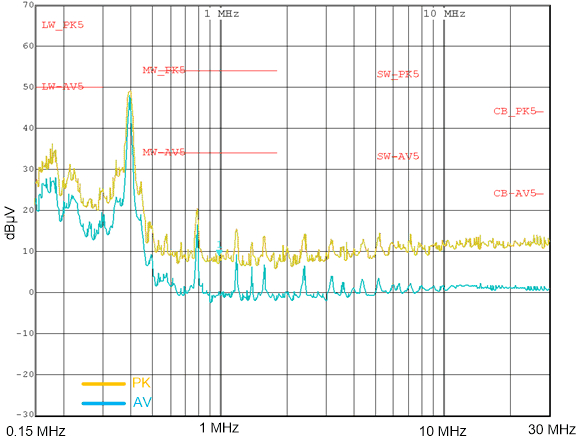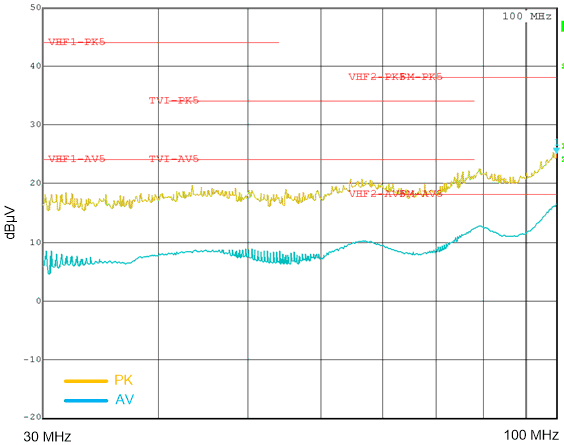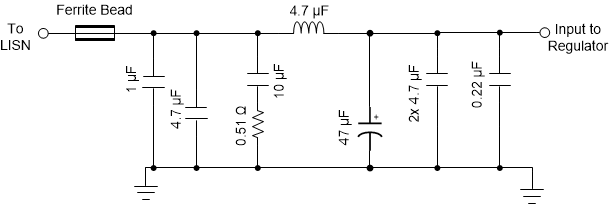JAJSIE0G November 2019 – November 2024 LM63635-Q1
PRODUCTION DATA
- 1
- 1 特長
- 2 アプリケーション
- 3 概要
- 4 Device Comparison Table
- 5 Pin Configuration and Functions
- 6 Specifications
- 7 Detailed Description
- 8 Application and Implementation
- 9 Device and Documentation Support
- 10Revision History
- 11Mechanical, Packaging, and Orderable Information
パッケージ・オプション
メカニカル・データ(パッケージ|ピン)
サーマルパッド・メカニカル・データ
発注情報
8.2.5 EMI Performance Curves
EMI results critically depend on PCB layout and test setup. The results given here are typical and given for information purposes only. Figure 8-29 shows the used EMI filter. The limit lines shown refer to CISPR25 class 5.

| VOUT = 5 V | ƒSW = 400 kHz |
| Dither | IOUT = 3.25 A |

| VOUT = 5 V | ƒSW = 400 kHz |
| Dither | IOUT = 3.25 A |

A. Input filter used only for EMI measurements shown in
Section 8.2.5.
Figure 8-29 Typical Input EMI Filter